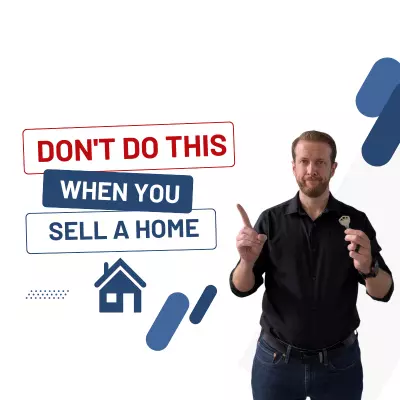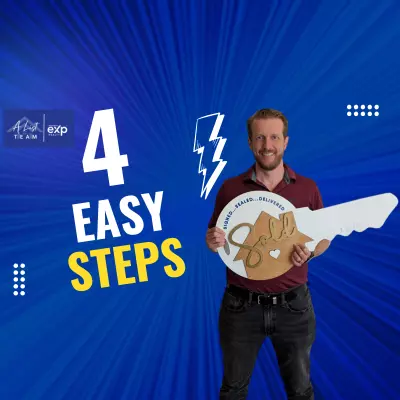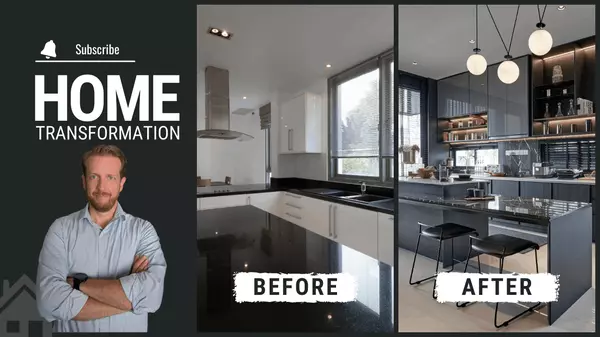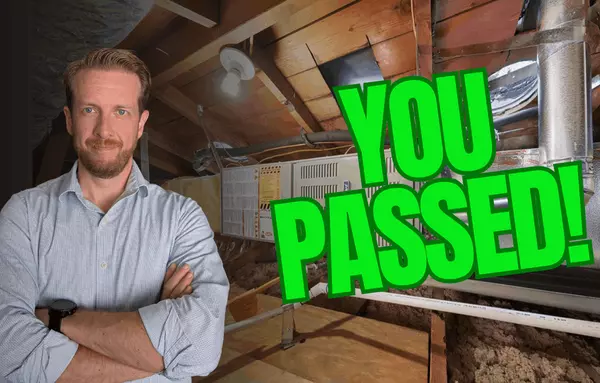Home Pricing Mistakes: 5 Secrets to Maximize Your Sale

Home Pricing Mistakes: 5 Secrets to Maximize Your Sale
Selling your home is one of the most significant financial decisions you will make, and pricing it correctly is the cornerstone of a successful sale. At the A List Team we understand the complexities involved in setting the right price for your property. Pricing too high or too low can cost you dearly—either by scaring away potential buyers or leaving money on the table. Through years of experience as realtors and real estate agents in the greater Houston area, we've identified five critical factors that influence your home's price. Understanding these can help you avoid common mistakes and maximize your sale.
Key Takeaways
- Pricing your home too high can cause it to linger on the market and raise red flags for buyers, while pricing too low means losing potential profit.
- Five main factors impact your home’s price: location, property condition and features, obsolescence, comparable sales, and timing.
- A strategic pricing approach tailored to your timeline and market conditions is essential to attract buyers and achieve top dollar.
Introduction: Why Pricing Your Home Matters
Many sellers assume they can simply list their home at a high price and wait for the right buyer to come along. While technically true that a home will eventually sell at any price, the reality is much more nuanced. At the A List Team, we emphasize that pricing your home correctly from the start can save you time, stress, and thousands of dollars.
When a home sits on the market for a long time without selling, buyers begin to question its value. Large price reductions often trigger concerns about hidden problems—foundation issues, roof damage, or other costly repairs. As a trusted real estate agent, I frequently receive calls from buyers worried about significant price drops. Avoiding these concerns means setting a realistic price based on market data, home condition, and buyer demand.
Moreover, most buyers rely on lenders to finance their purchase, and lenders require appraisals. If your home is priced too high, the appraisal may come in lower than the agreed sale price, forcing buyers to either bring extra cash to close or back out of the deal. This risk underscores the importance of pricing your home accurately to match what the market will support.
The Five Key Factors That Impact Your Home's Price
1. Location: The Foundation of Your Home’s Value
Location has always been a critical factor in real estate pricing, and it remains so today. Even within the same neighborhood, slight differences in location can significantly affect your home's value. Buyers often have very specific preferences, such as:
- Proximity to certain schools—elementary, middle, or high schools that are highly rated or preferred.
- Lot characteristics, like corner lots or larger yards, which may appeal to certain buyers.
- Whether the property lies within a flood zone compared to nearby homes that do not.
- Nearby noise sources or unsightly views, such as busy roads, train tracks, or commercial buildings.
These location details narrow the pool of buyers willing to pay top dollar for your home. At the A List Team, we carefully evaluate these nuances to position your home correctly in the market.

2. Property Condition and Features: What Buyers Want
Buyers search for homes that meet their needs both in size and features. For example, a three-bedroom, two-bathroom home will generally be priced differently than a four-bedroom, two-bathroom home, even within the same neighborhood. But beyond size, the quality and type of features can make a big difference:
- Upgrades like granite countertops, hardwood floors, or modern appliances may increase value if they align with neighborhood expectations.
- Conversely, features that don't match local preferences may not add value, even if they were expensive to install.
A common misconception is that investments in home improvements will directly translate to higher sale prices. For instance, swimming pools often cost over $100,000 to build but typically only add $30,000 to $50,000 in resale value. This discrepancy means sellers can lose a significant portion of their investment if buyers do not value the upgrade equally.
As your realtor, we encourage you to discuss any upgrades or planned improvements with us so we can assess their potential return based on data and market trends in Katy, TX.

3. Obsolescence: Physical, Functional, and Economic Factors
Obsolescence refers to factors that diminish your home’s value. We classify obsolescence into three categories:
Physical Obsolescence
This includes wear and tear or damage that lowers your home’s worth, such as:
- Leaking or aging roofs
- Outdated electrical or plumbing systems
- Visible structural issues
Functional Obsolescence
This involves design or layout issues that may not meet modern buyer expectations, including:
- Outdated kitchens or bathrooms that haven’t been remodeled
- Room layouts that hinder flow or usability
- Low ceilings or insufficient natural light
Some functional obsolescence can be corrected, but it may not always be financially worthwhile. Sometimes, it’s more practical to price the home lower to attract buyers rather than invest heavily in renovations.
Economic Obsolescence
These are external factors beyond your control that affect your home’s value:
- Rising property taxes in your area
- Changes in neighborhood desirability, such as loss of major employers
- New developments that affect the neighborhood’s character
For example, if property taxes increase significantly, buyers factor that additional cost into their offer price, reducing what they're willing to pay for your home. Click here for a more in depth look at economic obsolescence.

4. Comparable Sales: The Market’s Reality Check
Comparable sales, or "comps," are the backbone of pricing strategy. When buyers seek a mortgage, the lender’s appraiser will look at recent sales of similar homes in your neighborhood to determine a fair value. This ensures the bank isn’t lending more money than the property is worth.
If your listing price significantly exceeds these comparable sales, the loan may not be approved, and buyers will hesitate to make an offer. As your real estate agent, we conduct a thorough analysis of recent sales, focusing on:
- Price per square foot of similar homes
- Number of bedrooms and bathrooms
- Age and condition of the homes
- Unique features or upgrades that could justify a higher price
Sometimes, especially in slower markets or newer subdivisions, there may be limited recent sales data. In these cases, we use historical trends, market growth rates, and neighborhood analysis to project a realistic price range. For example, we recently helped a client in a subdivision with very few recent sales by modeling neighborhood growth and applying that to their home’s value, successfully achieving a higher appraisal than any previous sale in the area.
5. Timing: When You List Matters
The time of year you list your home can have a significant influence on the sale price. In Houston and Katy, TX, the market tends to slow down between late fall and mid-winter:
- January and February often see the lowest sale prices.
- Homes listed in October or November may not achieve top dollar.
- Peak selling seasons typically occur in late spring, from May through June.
This seasonal trend exists because many buyers want to move during the summer months, coinciding with their children’s school schedules. Families prefer to settle into new homes before the new school year begins in August. Consequently, listing during these peak months often results in more buyer interest and higher offers.
Of course, life circumstances don’t always allow sellers to choose the perfect time to move. That’s why the A List Team employs strategic marketing and presentation techniques to help your home stand out, regardless of the season.
Pricing Strategy: Finding the Sweet Spot
Beyond these five factors, pricing your home also involves strategic decisions. Should you list slightly higher than market value and negotiate down? Or list lower to spark multiple offers and a bidding war?
Culture and local market dynamics influence these strategies. For example, in some Latin American cultures, starting high and negotiating down is common. However, in many parts of Houston and Katy, TX, a stale market can result if a home is priced too high initially.
In a buyer’s market, listing closer to the average price with some room to negotiate might be best. Conversely, in a hot seller’s market, pricing slightly below average can attract multiple offers, driving the price up through competition.
As your trusted real estate agents, the A List Team analyzes local data, buyer activity, and market conditions to recommend the optimal pricing strategy tailored to your goals and timeline.
Conclusion: Maximize Your Sale with Expert Pricing
Pricing your home is both an art and a science. It requires understanding market dynamics, buyer behavior, and the specific attributes of your property. By focusing on the five key factors—location, property condition and features, obsolescence, comparable sales, and timing—you can avoid common pricing mistakes that cost sellers time and money.
At the A List Team, serving Katy, TX, and the greater Houston area, we combine data-driven analysis with personalized strategy to help you price your home competitively and attract qualified buyers. Whether you need to sell quickly or want to maximize your profit, we tailor our approach to meet your needs. Our team of experienced realtors and real estate agents is ready to guide you through every step of the selling process in Katy, TX, and beyond. Let us help you avoid costly pricing mistakes and get the most out of your home sale!
Categories
Recent Posts











